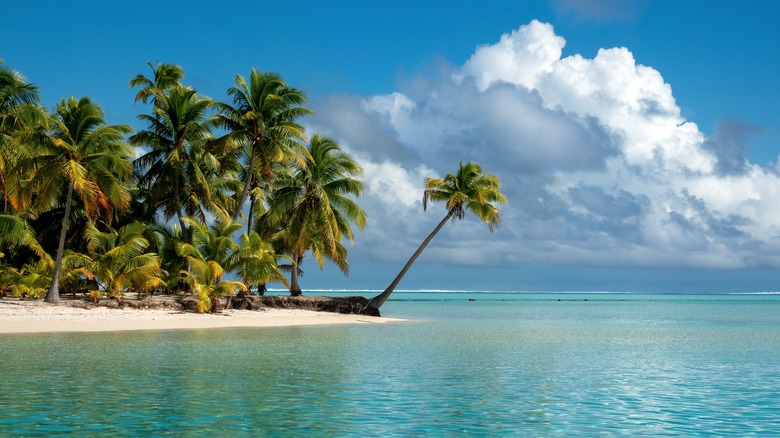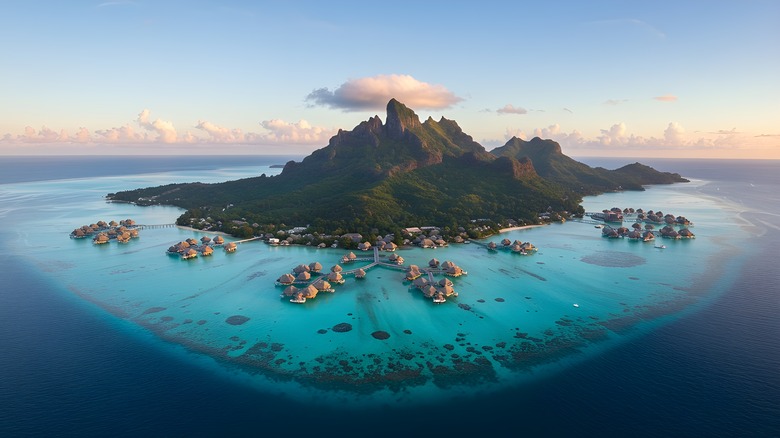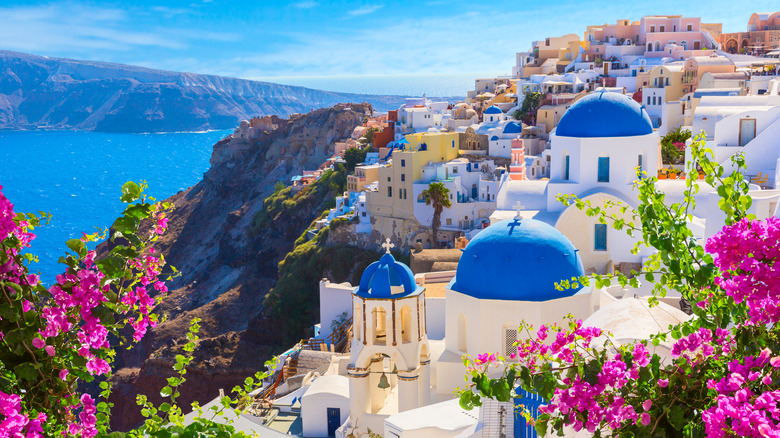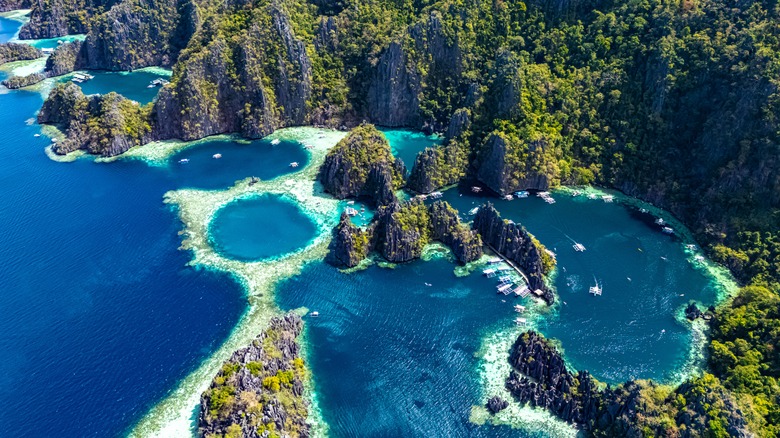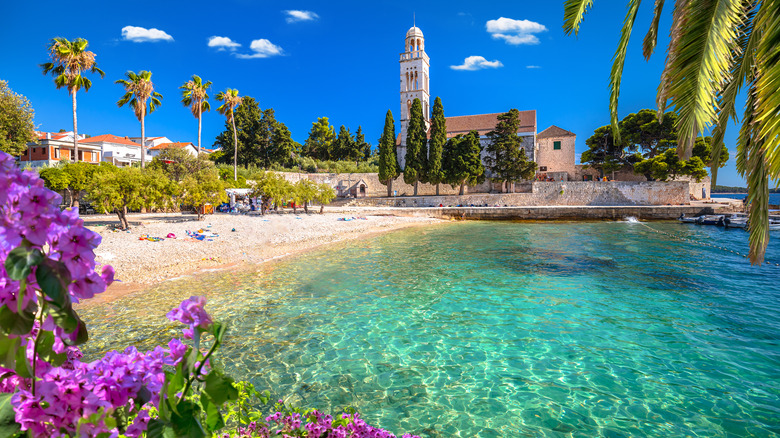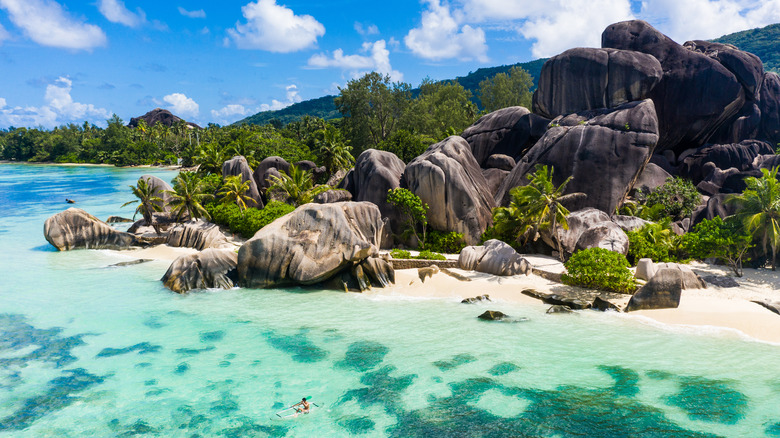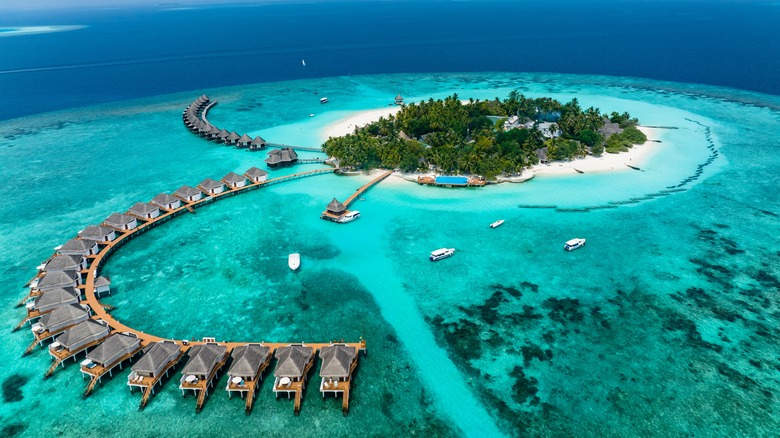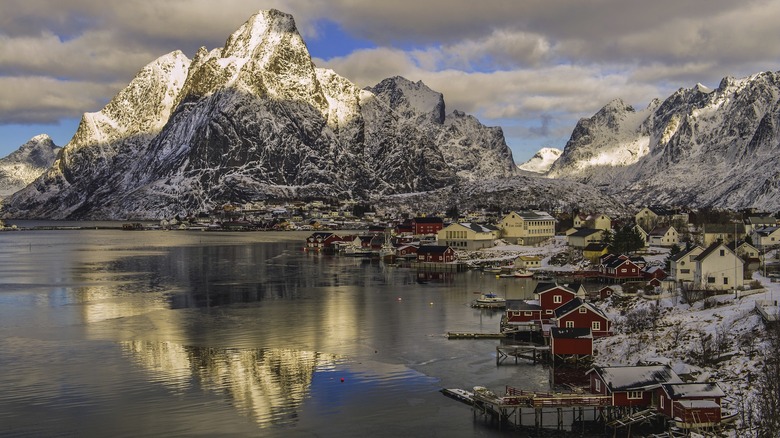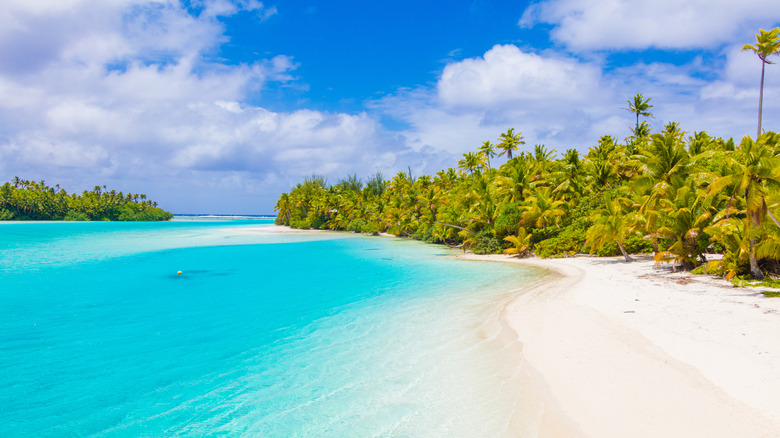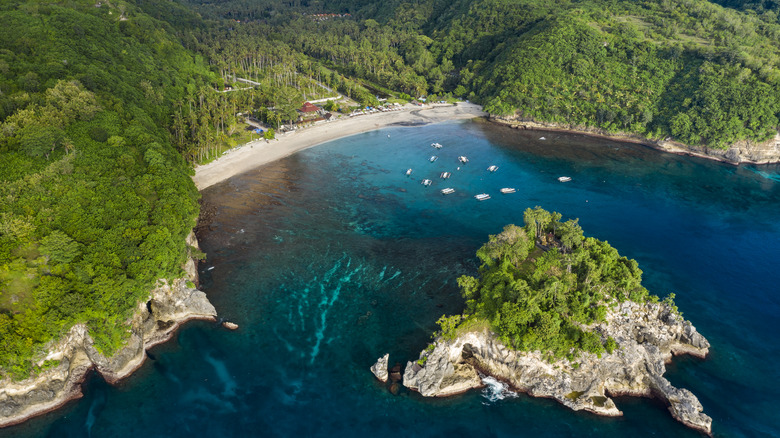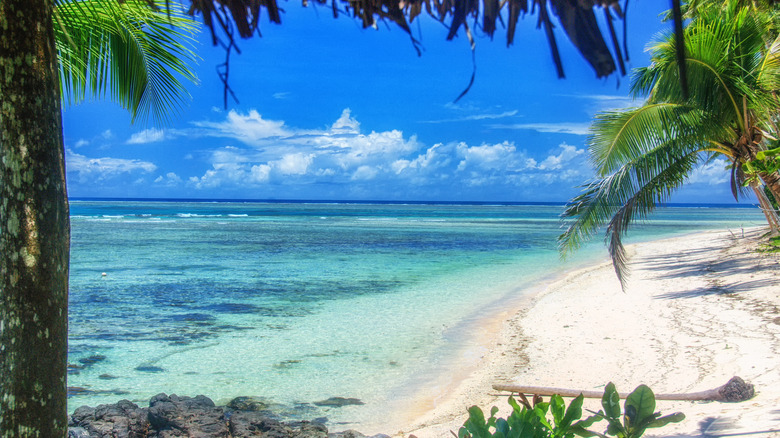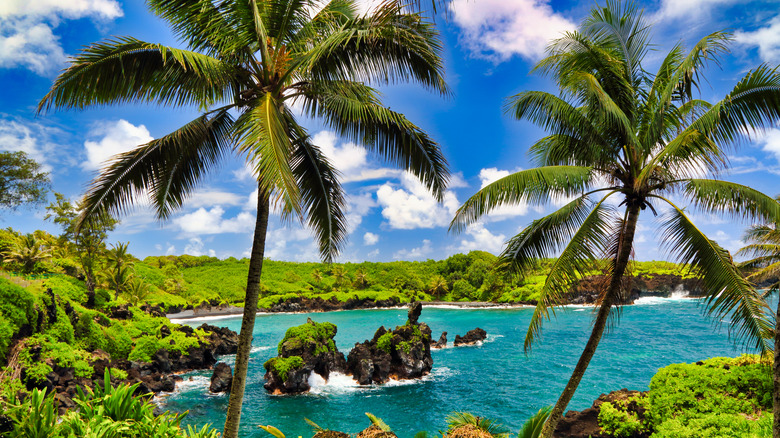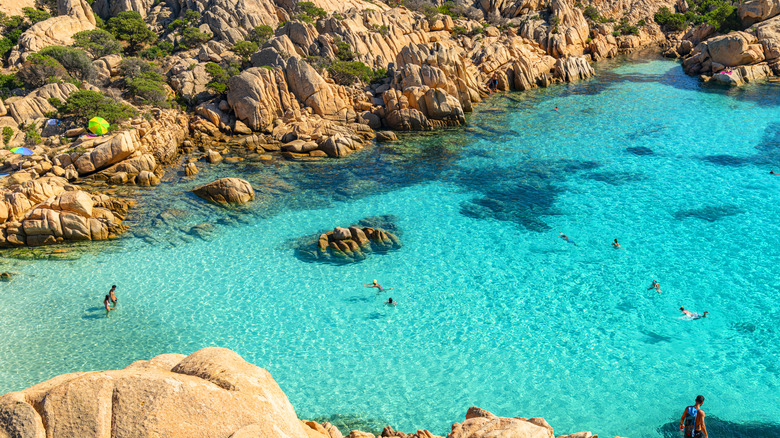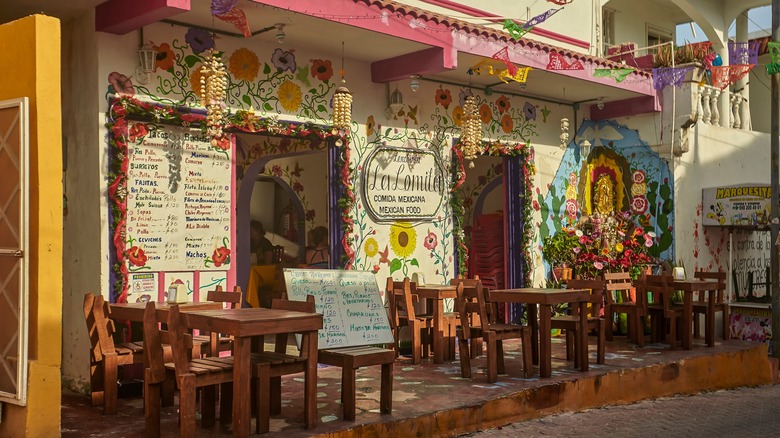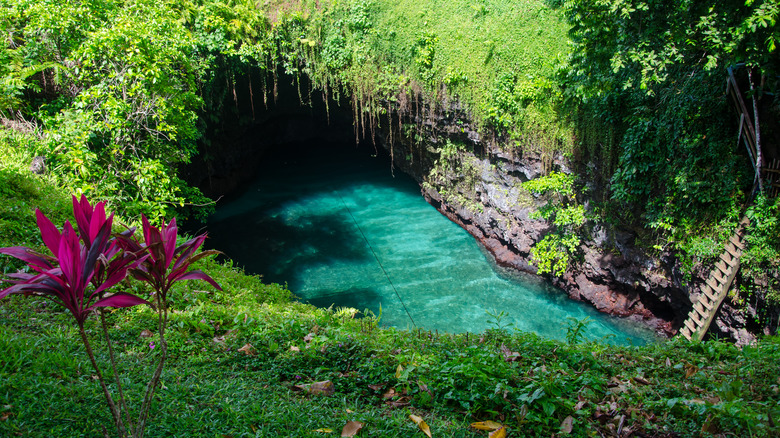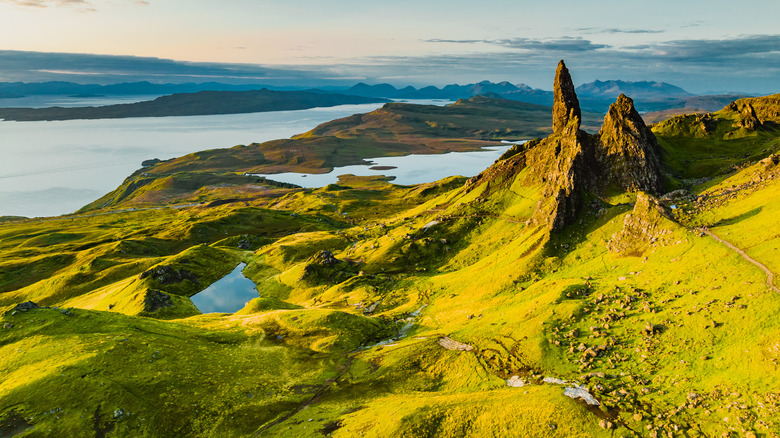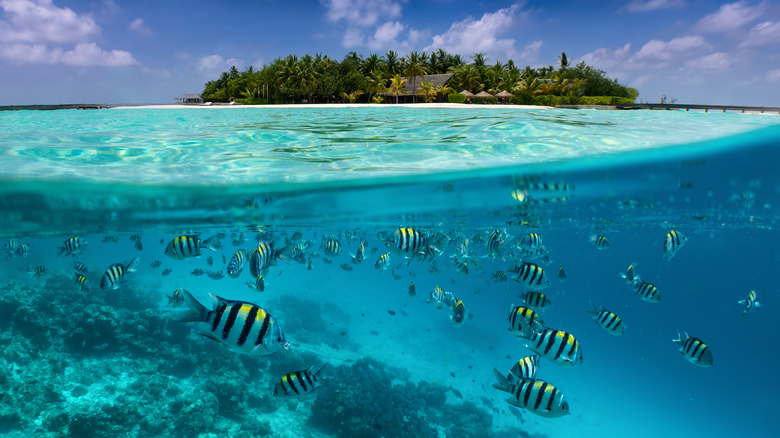The 15 Most Beautiful Islands On The Planet Belong On Your Bucket List
Paradise means different things to different travelers. For some, it's the soft rhythm of waves and warm sand underfoot; for others, it's a sense of remoteness, of culture, or of story. Whether you're dreaming of warm-weather European islands or planning a dreamy escape to a Caribbean island, there's one common quality most people are looking for: beauty. Places where sea and sky seem to meet and time feels suspended. And while the idea of an island paradise may conjure white sands and palm trees, the reality is far broader. Beauty can also be volcanic cliffs and wind-carved headlands, coral lagoons alive with color, or green mountains rising from the mist.
This curated collection of 15 islands spans oceans and continents — from the dramatic shores of the North Atlantic to the still, glassy lagoons of the South Pacific. Each destination on this list has been chosen for its distinct personality and, together, they reveal just how many shapes paradise can take.
Bora Bora, French Polynesia
Set within the Society Islands of French Polynesia, Bora Bora is often called the "Pearl of the Pacific" — a phrase that captures its near-mythic beauty. At its heart rises Mount Otemanu, a jagged volcanic peak that soars above the lagoon and gives the island its iconic silhouette. The Matira Peninsula, with its curve of soft white sand and calm, shallow water, is the word stunning personified; meanwhile, the Coral Gardens and Tupitipiti Point reveal a vivid underwater world where rays, sharks, and clouds of tropical fish reside.
Yet Bora Bora is much more than postcard-perfect scenes and beautiful overwater bungalows. Polynesian culture thrives here through dance, music, outrigger canoeing, and many other ancestral traditions that continue to shape daily life. That said, as a high-profile luxury destination, the island also faces the ongoing challenge of balancing tourism with conservation — from preserving coral reefs to protecting marine life, and maintaining cultural authenticity. Thankfully, many resorts now champion sustainability and cultural connection, offering experiences rooted in Polynesian heritage and supporting local communities.
Santorini, Greece
Few islands are as instantly recognizable as Santorini, its whitewashed buildings and blue-domed churches tumbling down volcanic cliffs into the Aegean sea. Formed by one of the most powerful eruptions in ancient history, the island's dramatic caldera remains its defining feature — a vast amphitheatre of sea framed by black and red rock. Each village and town along the rim also offers its own character: Oia's famous sunsets, Fira's energy, and Akrotiri's archaeological remains — a Minoan settlement preserved in ash that's often referred to as a "Greek Pompeii" with views to the sea.
Despite its fame, Santorini still has quiet corners of extraordinary beauty. The black sands of Perissa and Kamari stretch beneath the cliffs, while the rust-red cove of Kokkini Beach glows like embers at dusk. From the monastery at Profitis Ilias, the view sweeps across the caldera to the open Aegean, a panorama that reveals just how dramatic this landscape truly is. Those who venture outside of the more popular areas will also find an island of slower pleasures — quiet tavernas, traditional houses, and quaint streets that wind lazily above the sea.
Coron Island, Philippines
In the northern reaches of the Philippines' Palawan province lies Coron Island, a place where limestone cliffs rise like sentinels from clear, jade-green water. The island's karst formations, crystal-clear lagoons, and mangrove forests have made it a favorite among divers and adventurers seeking something less polished than the typical resort isle. Beneath the surface lies another world entirely: a fleet of Japanese ships sunk during WWII, now transformed into coral-encrusted habitats for fish and sea fans.
Above the waves, the Tagbanua people maintain a quiet guardianship over parts of the island, ensuring its caves and lakes remain sacred and protected. In fact, sustainable tourism is crucial here. The native Tagbanua community has secured collective rights over some 22,000 hectares of land and sea, and now manages visitor access, monitors waste, and regulates activity at key sites like Kayangan Lake, ensuring that dive-numbers, boat behavior, and reef visits stay within sustainable limits. As a result, travelers will find that Coron's magic lies not only in its surreal beauty but also in its indigenous guardianship — a paradise where nature, community, and tourism live side by side.
Hvar, Croatia
Sun-drenched and sophisticated, Hvar captures the essence of the Adriatic at its most alluring. Its Venetian-era harbor, fringed with cafe terraces and polished yachts, gives way to winding lanes perfumed by the island's lavender fields. Beyond the Old Town, the island stretches into a sun-drenched landscape of vineyards, olive groves, and hidden bays where the ocean shimmers in countless shades of blue. Known as one of Croatia's sunniest islands, Hvar enjoys over 2,700 hours of sunshine a year, nurturing its centuries-old wine-making and olive-growing traditions.
Evenings move to an easy rhythm in Hvar: locals strolling the palm-lined Riva, the scent of grilled fish and rosemary drifting through the air, church bells echoing from stone piazzas. Inland, the quieter heart of the island reveals ancient villages like Velo Grablje and Malo Grablje, hillside monasteries, and family-run konobas serving wine from the native Plavac Mali grape. Though Hvar is now known for its glamorous sailing scene, it remains rooted in tradition, perfectly attuned to the rhythm of the Mediterranean.
La Digue, Seychelles
La Digue, the fourth largest island in the Seychelles, feels like an echo from a gentler era. Here, the coastline unfolds as a series of captivating bays, revealing one heart-stoppingly beautiful beach after another, while the island's hilly interior is covered in towering trees and wild trails that wind through its lush core. The island's greatest treasure is Anse Source d'Argent (pictured), a beach so sculptural it borders on surreal, with granite boulders, polished by centuries of wind and sea, scattered across powder-white sand and shallow turquoise water.
Despite its almost other-worldly beauty, La Digue remains remarkably laid-back. Life here plays out at bicycle pace, while fishermen carry their day's catch along village lanes and the air is scented with vanilla from the Union Estate plantations. Beneath the surface, coral gardens are brimming with a huge variety of marine life, protected by conservation efforts that limit development and promote reef restoration. The result is an island that feels timeless, unhurried, and close to nature.
Malé Atoll, Maldives
When most people picture the Maldives, they see exactly this: coral isles circling a sapphire lagoon, over-water villas on stilts, white-sand beaches, and reefs alive with color. In the heart of the archipelago, Malé Atoll — often distinguished as North and South Malé — perfectly embodies that ideal. The country comprises roughly 1,192 islands strung like pearls for about 541 miles near the equator, and Malé Atoll delivers a natural amphitheater of calm water, house reefs, and horizon-wide skies.
It is a place where the choreography of arrival heightens the sense of wonder. A seaplane banks over a ring of turquoise, you step onto a timber jetty, and within minutes, you are drifting above coral gardens, watching parrotfish graze and the light ripple across branching acropora. Yet, this beauty is delicate. Coral bleaching, sea-level rise, and tourism pressure mean travelers have an important role to play when considering the best things to do in the Maldives. This includes always choosing reef-safe sunscreen, keeping hands clear of coral, avoiding single-use plastic, and following marine-life guidelines.
Moskenesøya, Lofoten, Norway
At the edge of the Arctic Circle, Moskenesøya, in Norway's Lofoten Islands, offers a very different kind of paradise carved from granite and silence. Here, sharp peaks rise from glassy fjords, and red-painted fishing cabins perch at the water's edge, reflections suspended in the stillness. In summer, the midnight sun lingers over mountain ridges; in winter, the northern lights regularly twist across polar skies. Villages such as Reine and Å preserve centuries of seafaring heritage, their harbors still bustling with fishing boats and the distinctive red "rorbuer" cabins once used by fishermen. Dotted throughout the landscape, they underscore the connection to the sea, while the island's dramatic geology frames every village and fjord.
Despite its growing fame, Lofoten remains a place where solitude is easy to find. Much of the island is part of Lofotodden National Park, created to protect its wild coastlines, turquoise bays, and towering cliffs. Visitors can hike across mountain passes to reach remote spots like Bunes Beach — an ancient stretch of pale Arctic sand framed by sheer rock walls — or paddle quietly through mirror-like fjords. Moskenesøya is living proof that paradise doesn't always mean palm trees and heat.
Aitutaki, Cook Islands
Aitutaki, a tiny speck in the South Pacific, feels almost impossibly idyllic. Its vast, shallow lagoon glows turquoise in every direction, scattered with uninhabited islets that seem made for daydreams. Unlike its glossier cousin Bora Bora, Aitutaki has remained quiet — content with boutique resorts and small guesthouses, barefoot dining, and a slower pace. Here, visitors encounter warm, welcoming locals deeply proud of their Polynesian heritage, eager to share stories of voyaging ancestors who once charted these seas by star and wind.
With "no building taller than a palm tree," as The Daily Telegraph once put it, the skyline remains pure horizon. Days on Aitutaki unfold at an easy, unhurried pace — cycling beneath palm groves, kayaking across the lagoon, or venturing by boat to the surrounding motu (islets). These include hidden gems such as Maina, Honeymoon Island, and One Foot Island, where visitors can even have their passports stamped at what's said to be the world's smallest post office. The lagoon itself is alive with color, too, and snorkeling trips reveal coral clusters, turtles, and shoals of bright tropical fish drifting in the current. Could this be paradise on Earth? Quite possibly, yes.
Nusa Penida, Indonesia
Just a short ferry ride from Bali, Nusa Penida is Bali's wilder, more elemental sister. A place of cliffs, caves, and untamed shoreline, its most famous viewpoint, Kelingking Beach is instantly recognizable from above — a limestone headland shaped like a T-Rex's spine that plunges into impossibly blue water. Nearby, Angel's Billabong is a natural infinity pool carved into the island's western cliffs, where pristine waters lap between weathered stones. At low tide, its emerald pools seem to cascade gently into the ocean, creating one of the most ethereal swimming and photography spots in Indonesia.
However, the island's beauty isn't just above the surface. Snorkeling at Crystal Bay, one of Nusa Penida's most idyllic beaches, reveals calm, crystalline waters ideal for both swimming and exploration. Beneath the waves, vibrant reefs teem with marine life, from darting reef fish to graceful sea turtles, and the elusive mola mola (sunfish) that appear in-season. With its soft white sand, gentle surf, and west-facing view, Crystal Bay is also among the island's most captivating sunset spots. Here, the sky melts into shades of gold, pink, and violet over a perfectly still sea. It's Bali before the boom: wild, spiritual, and irresistibly beautiful.
Taveuni, Fiji
Known as Fiji's "Garden Isle", Taveuni is a feast of green, with rainforest spilling down volcanic slopes, orchids blooming beside waterfalls, and coral reefs shimmering just offshore. This is Fiji at its most natural, where days begin with birdsong and end with the hum of cicadas. The island is famed for the Rainbow Reef, a technicolor world of soft corals and marine life that's considered among the best diving anywhere in the Pacific. Inland, Bouma National Heritage Park protects vast tracts of rainforest that make up nearly a third of Taveuni's total area — around 58 square miles of coastal forest and Fijian jungle.
The park's crown jewel is the Tavoro (Bouma) Falls, a series of three spectacular waterfalls hidden within dense vegetation. All featuring natural pools perfect for a refreshing dip, the first cascade is an easy walk from the visitor center, while the second and third reward those who venture farther with sweeping views across the island.
Maui, Hawaiʻi, USA
Maui gathers the essence of Hawaiʻi into one island, with a combination of volcanic peaks, lush valleys, bamboo forests, and beaches that shift from gold to black. It's an island of contrasts, where you can watch sunrise above the clouds at Haleakalā National Park, then drive the iconic serpentine road to Hāna through rainforest dripping with waterfalls. Along the way, spots like Wailua Falls, Waiʻānapanapa State Park's black-sand beach, and the Pools of ʻOheʻo (Seven Sacred Pools) showcase the island's natural drama.
Surf culture and traditional Hawaiian heritage coexist here, each shaping the island's identity. In historic Pāʻia, colorful storefronts, boutique shops, and local restaurants make for a perfect day of exploring. Inland, taro fields and ancient heiau temples speak of a deeper past. Maui's diversity, from its coastlines to its high country, gives it a sense of completeness — a microcosm of Hawaiʻi itself, where volcanic power and tropical calm meet. More than just a holiday spot, Maui embodies the living spirit of Hawaiʻi, revealing a place of extraordinary beauty and deep cultural roots.
Maddalena, Italy
Off Sardinia's northern coast, La Maddalena and its surrounding archipelago form one of the Mediterranean's most unspoiled marine landscapes. Comprised of a sweep of granite coves, turquoise shallows, and windswept headlands protected within the La Maddalena Archipelago National Park, it's an untouched natural wonderland. A 28-mile coastal road circles the island, revealing ever-changing views of white-sand bays such as Bassa Trinità and Spalmatore, secluded inlets like Cala Francese, and lookout points where granite and porphyry cliffs meet the deep blue sea.
At its heart lies the town of La Maddalena itself, elegant, colorful, and full of character. Pastel-painted buildings line narrow lanes that open onto lively squares, while boutiques and artisan shops sell jewelry, textiles, and crafts inspired by the sea. Ice-cream parlors, cafes, and restaurants also spill onto pavements, and animated bars invite visitors to linger over a glass of wine or mirto, the region's aromatic myrtle liqueur. Across the narrow Passo della Moneta, a bridge that connects La Maddalena to the nearby Caprera, travelers can visit Garibaldi's former home, as well as hidden coves such as Cala Coticcio, nicknamed the "Sardinian Tahiti" for its luminous water.
Isla Mujeres, Mexico
You may have expected another pristine beach shot here — with white sands, water so clear you can see through it, and palm trees swaying gently in the breeze. Well, Isla Mujeres has all that, but it's actually the laid-back streets and Mexican culture oozing from every corner that truly set this island apart. An easy addition to any list of the world's most beautiful places, Isla Mujeres is one of the most underrated islands in Mexico — a place where golf carts outnumber cars and life moves to an unhurried rhythm. Not even 5 miles long, it's a world apart from nearby Cancún — which is just a 20-minute ferry ride away — offering a more local, authentic feel.
In the town center, pastel-painted façades and murals line narrow streets filled with taquerías, cafés, and artisan stalls selling handmade crafts and jewelry. Down by the water, fishing boats sway in the shallows and beach bars serve ceviche and margaritas as the sun sinks into the Caribbean. With its calm turquoise seas, welcoming community, and effortless mix of natural and cultural beauty, Isla Mujeres captures the spirit of Mexico at its most easy-going and enchanting.
Upolu, Samoa
Upolu, Samoa's second largest island, unfolds like a living palette of green, with dense forests climbing steep slopes, cascading waterfalls plunging into hidden pools, and beaches that stretch into tranquil bays. It's also a place of stunning contrast — from the sapphire plunge of the To Sua Ocean Trench (pictured), a dramatic sinkhole filled with crystalline water set amid volcanic terrain, to waterfalls tumbling through rainforest, and lava fields partially reclaimed by jungle. Everywhere here, nature feels alive with the humid scent of hibiscus and pandanus, combined with the meeting of fresh jungle air and warm sea breezes.
Meanwhile, Upolu's largest town and Samoa's capital, Apia, brings a lively counterpoint to the island's tranquility. Here, buzzing markets overflow with tropical fruit, fresh fish, and handwoven crafts, while museums, galleries, and vibrant eateries — from laid-back cafés to fine-dining restaurants — showcase the island's rich cultural life and modern creativity.
Isle of Skye, Scotland
The Isle of Skye, off Scotland's west coast, is a study in drama and myth. Its jagged Cuillin peaks and rolling moors meet the sea in a landscape that feels both ancient and alive. Mist curls around the cliffs of the Quiraing, and the Fairy Pools glimmer at the foot of the Black Cuillin range, their waters shifting from deep green to luminous blue. Set on the Allt Coire a' Mhadaidh, these crystal-clear pools flow down from Coire na Creiche into Glen Brittle, creating a series of natural basins perfect for photography or, for the brave, a dip in the icy mountain water. These areas are remote, so if you're hiking solo for the first time, make sure you follow all safety tips, including having your downloaded map handy.
The Isle of Skye draws as much power from its traditions as from its dramatic scenery. With around 2,000 working crofts still in operation, crofting — that's small-scale farming of a few acres — remains a vital thread of island life, connecting the land, sea, and people. Meanwhile, Gaelic legends of selkies, faeries, and sea spirits continue to echo through the glens, mountains and coastlines, enriching the landscape with myth and meaning.
Methodology
This collection highlights the beauty of each island in its purest form. These 15 destinations were each chosen as a self-contained world with its own geography, culture, and character. Our final selection was based on three main criteria: striking landscapes, cultural or historical depth, and a strong sense of individuality.
Drawing from official tourism boards, established travel guides, and conservation organizations, we conducted meticulous research to ensure accuracy. More than a ranking, this is a curated set of islands that, together, represent paradise and beauty in all its forms — from remote wilderness to serene tropical escape.
